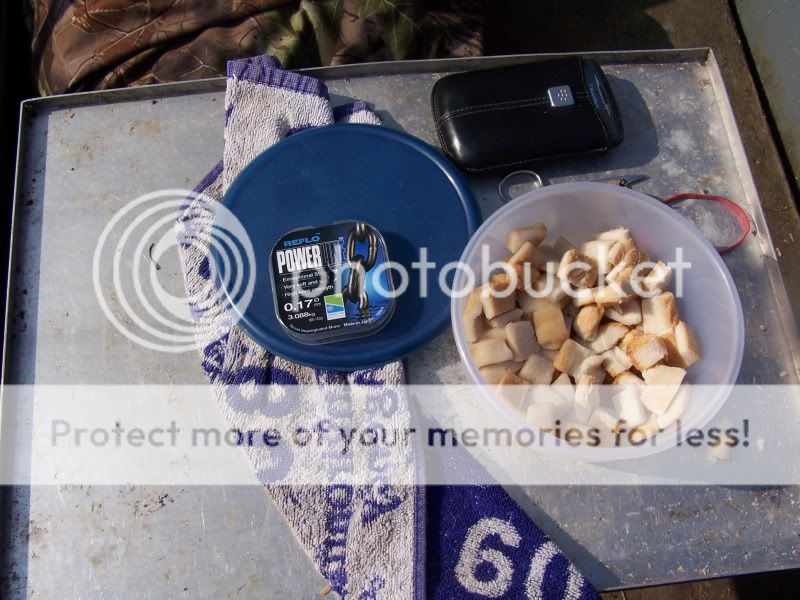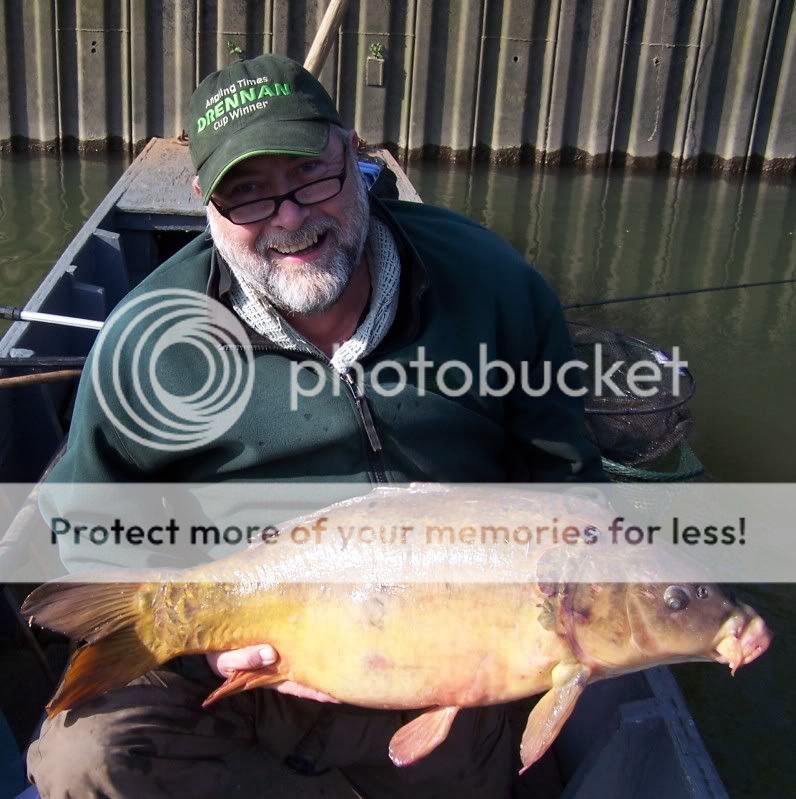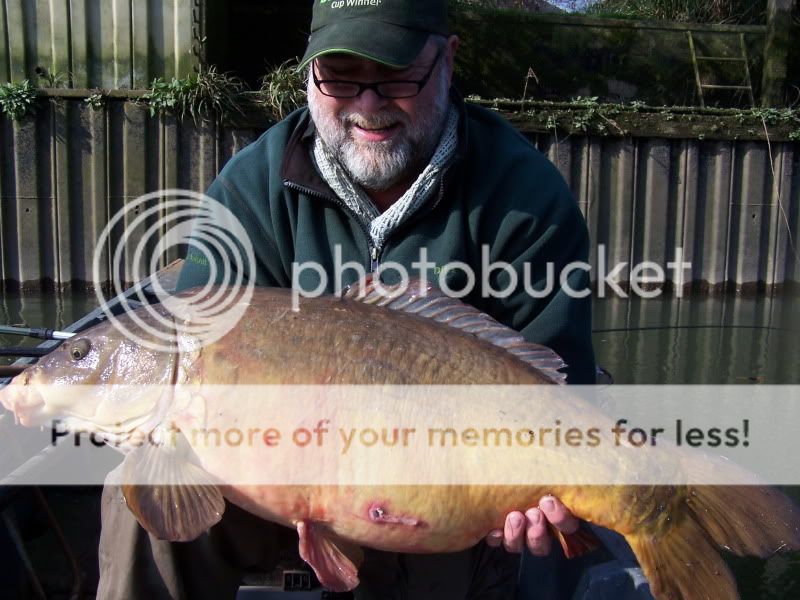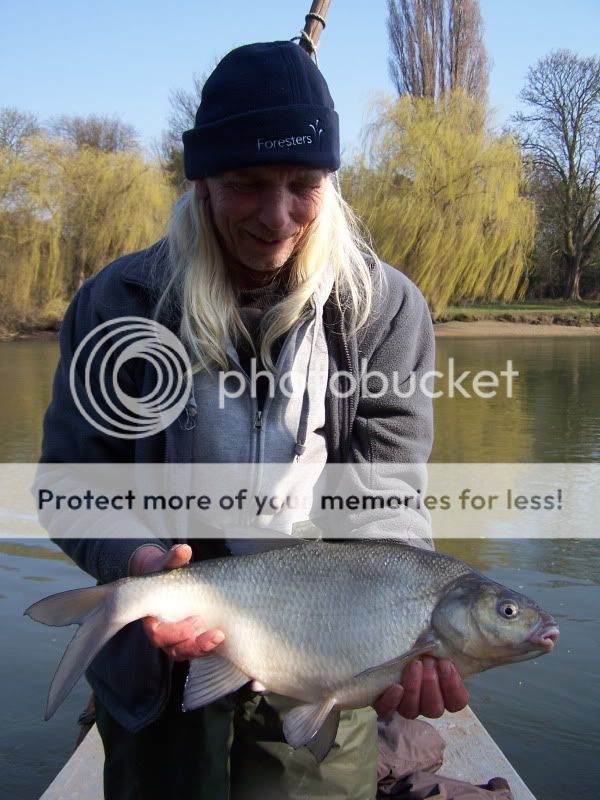Keith Speer
Senior Member
After a call from my old mate Keith Clark of the Francis Francis Punt Club I found myself invited for a day on The Tidal Thames near to Twickenham.
I have fished on the punts many times before and Keith is super company whether you catch or not so I was keen to have a day out with him before the close season and the dreaded decorating reared its ugly head.
Keith had informed me that the tide was due to be perfect from about 7-00am this morning so I arrived at the boat yard at about 6-30 only to find that Clarky had already set the outboard, pushing pole and ryepeck’s, so we were good to go.

The Francis Francis club is the last (and oldest) punt club to moor in traditional style across the river using ryepeck’s, the club is over a century old and Keith is so old that he was around when the club was formed, however he no longer wears his top hat while fishing and he also has not had his hair cut since 1901 as a mark of respect for Queen Victoria’s passing.

Ryepeck’s are wooden poles fitted with a shoe with a sharp point that is pushed and jiggled into the river bed, once in, the punt is moored across the current and is secured to the now vertical ryepeck’s with a loose chain, this chain can slide up and down the ryepeck when the tide rises and lowers, the method of fishing is usually traditional too, members will trot the stream away from the punt using traditional bodied floats and “wet bread†hook bait while using mashed bread as ground bait.
This is a deadly way to fish The Thames, you simply lower the tackle into the water in front of you and hold the float back as it flows with the stream away from you, tackle control with the aid of a centre pin means you can achieve the ultimate in bait presentation and if you have a unique knowledge of the river and have mixed the mashed bread correctly then you are in with a shout of catching some superb fish.
For bait we had Wet bread, Lobworms and some corn (which we did not touch), we did not have any:- boilies, soft hooker pellets, donkey choker pellets, bed chairs, zig rigs, bite alarms or bolt rigs, we were however Carp fishing and we would have to rely on watching a float!
This was bound to end badly!
The morning was bright but we suffered a harsh frost, something that would worry me if I were fishing anywhere else but on the tide way it is the state of the tide and the amount of flow that matters and we had chosen our day well.
Once we were in position with the ryepeck’s set we plumed the depth and introduced two bowls ball sized balls of mashed bread by simple releasing them over the back of the punt.
The fishing started slowly, we did not expect many bites, there are a few Bream to be had in this swim and they go up to about 10lbs but we were armed for bear, I was using a Drennan MkIII Tench float rod with my Okuma, loaded with Drennan 8lb Double Strength, a 4 AAA bodied float and a ESP Big T Raptor size 8 hook to Preston Reflo Powerline (0.17 dia or 6lb 12oz in old money) hook length, Keith was fishing with similar gear.
The anticipation was electric, Keith has had Carp to over 27lb from this swim and has often had multiple catches between tides, so over the next 2 hours we fished on steadily and during that time we both missed a bit each.

The bait we were using was cut squares of wet bread folded over and hooked in the fold, once in the water the bread puffed up to a cube of about ¾ of and inch square which we trotted on or as near to the bottom as we could, once prepared properly and reeled back carefully after each trot we could trot the same bait through the swim up to 10 or 12 times.
After reeling in carefully I noticed that a section had broken away from my bait, I considered a fresh bait but decided to re fresh my bait on the following trot, after dropping my tackle back in the water the float moved about 3yards down the swim and slid under to one side, I struck and the rod hooped round fully compressed.

The Carp shot off into the main current, rolled once to let us see how big it was and then went every where:- up, down, across, upstream, down stream and then did it all again under the watchful gaze of a Port of London Authority boat that stayed to watch the fireworks, all the while I was dishing out some serious stick and had to change arms twice before Clarky slid the net under her allowing me to have a serious case of the shakes and several cups of tea.

When it comes to photgraphy, Clarky is a bloody good angler!

At 27lb 4oz a Thames Carp PB for me (and a case of tennis elbow)!
We fished on, I had one more iffy bite on a big lob and Clarky had a Carp which turned into a Hybred and then into a 6lb Bream, considering the gear he was using this Bream ran him ragged, there are not many places where Bream take line but these tidal fish are like a different species, fitted with both a turbo and after burners.


At 2.00pm the tide turned and it was time to go home, the end of a simply superb day that had everything:- pleasant sunshine, enjoyable fishing, a proper lump for me and of course the best bit was the company of Clarky, a knowledgeable and very capable angler and puntsman, AND a diamond geezer to boot.
Thanks mate!!
Tight Lines.
I have fished on the punts many times before and Keith is super company whether you catch or not so I was keen to have a day out with him before the close season and the dreaded decorating reared its ugly head.
Keith had informed me that the tide was due to be perfect from about 7-00am this morning so I arrived at the boat yard at about 6-30 only to find that Clarky had already set the outboard, pushing pole and ryepeck’s, so we were good to go.

The Francis Francis club is the last (and oldest) punt club to moor in traditional style across the river using ryepeck’s, the club is over a century old and Keith is so old that he was around when the club was formed, however he no longer wears his top hat while fishing and he also has not had his hair cut since 1901 as a mark of respect for Queen Victoria’s passing.

Ryepeck’s are wooden poles fitted with a shoe with a sharp point that is pushed and jiggled into the river bed, once in, the punt is moored across the current and is secured to the now vertical ryepeck’s with a loose chain, this chain can slide up and down the ryepeck when the tide rises and lowers, the method of fishing is usually traditional too, members will trot the stream away from the punt using traditional bodied floats and “wet bread†hook bait while using mashed bread as ground bait.
This is a deadly way to fish The Thames, you simply lower the tackle into the water in front of you and hold the float back as it flows with the stream away from you, tackle control with the aid of a centre pin means you can achieve the ultimate in bait presentation and if you have a unique knowledge of the river and have mixed the mashed bread correctly then you are in with a shout of catching some superb fish.
For bait we had Wet bread, Lobworms and some corn (which we did not touch), we did not have any:- boilies, soft hooker pellets, donkey choker pellets, bed chairs, zig rigs, bite alarms or bolt rigs, we were however Carp fishing and we would have to rely on watching a float!
This was bound to end badly!
The morning was bright but we suffered a harsh frost, something that would worry me if I were fishing anywhere else but on the tide way it is the state of the tide and the amount of flow that matters and we had chosen our day well.
Once we were in position with the ryepeck’s set we plumed the depth and introduced two bowls ball sized balls of mashed bread by simple releasing them over the back of the punt.
The fishing started slowly, we did not expect many bites, there are a few Bream to be had in this swim and they go up to about 10lbs but we were armed for bear, I was using a Drennan MkIII Tench float rod with my Okuma, loaded with Drennan 8lb Double Strength, a 4 AAA bodied float and a ESP Big T Raptor size 8 hook to Preston Reflo Powerline (0.17 dia or 6lb 12oz in old money) hook length, Keith was fishing with similar gear.
The anticipation was electric, Keith has had Carp to over 27lb from this swim and has often had multiple catches between tides, so over the next 2 hours we fished on steadily and during that time we both missed a bit each.

The bait we were using was cut squares of wet bread folded over and hooked in the fold, once in the water the bread puffed up to a cube of about ¾ of and inch square which we trotted on or as near to the bottom as we could, once prepared properly and reeled back carefully after each trot we could trot the same bait through the swim up to 10 or 12 times.
After reeling in carefully I noticed that a section had broken away from my bait, I considered a fresh bait but decided to re fresh my bait on the following trot, after dropping my tackle back in the water the float moved about 3yards down the swim and slid under to one side, I struck and the rod hooped round fully compressed.

The Carp shot off into the main current, rolled once to let us see how big it was and then went every where:- up, down, across, upstream, down stream and then did it all again under the watchful gaze of a Port of London Authority boat that stayed to watch the fireworks, all the while I was dishing out some serious stick and had to change arms twice before Clarky slid the net under her allowing me to have a serious case of the shakes and several cups of tea.

When it comes to photgraphy, Clarky is a bloody good angler!

At 27lb 4oz a Thames Carp PB for me (and a case of tennis elbow)!
We fished on, I had one more iffy bite on a big lob and Clarky had a Carp which turned into a Hybred and then into a 6lb Bream, considering the gear he was using this Bream ran him ragged, there are not many places where Bream take line but these tidal fish are like a different species, fitted with both a turbo and after burners.


At 2.00pm the tide turned and it was time to go home, the end of a simply superb day that had everything:- pleasant sunshine, enjoyable fishing, a proper lump for me and of course the best bit was the company of Clarky, a knowledgeable and very capable angler and puntsman, AND a diamond geezer to boot.
Thanks mate!!
Tight Lines.

